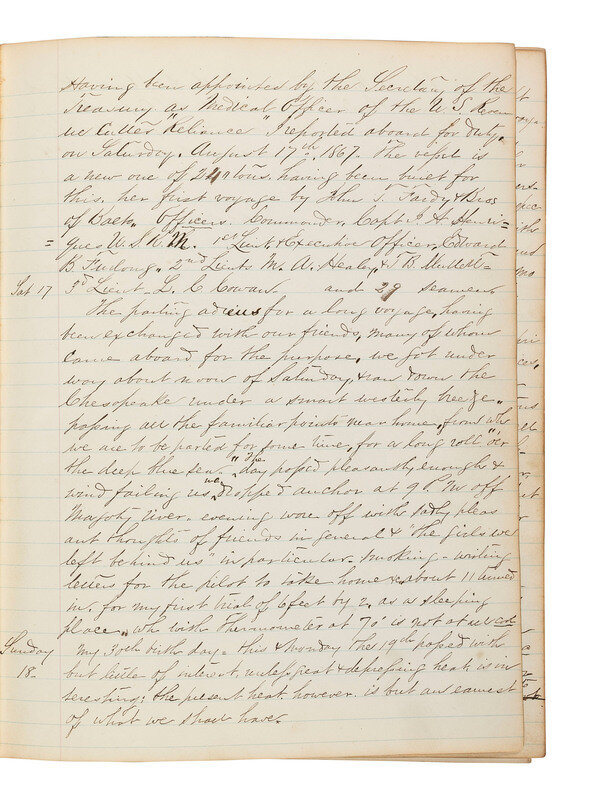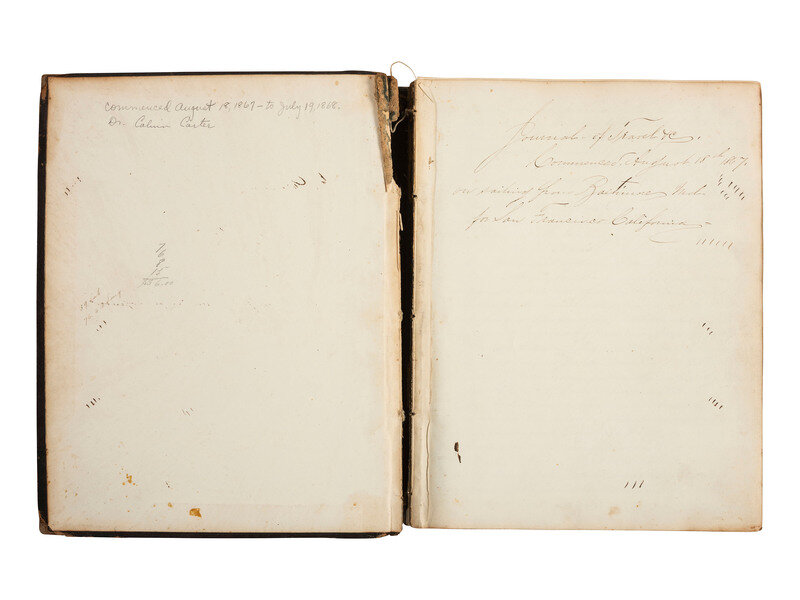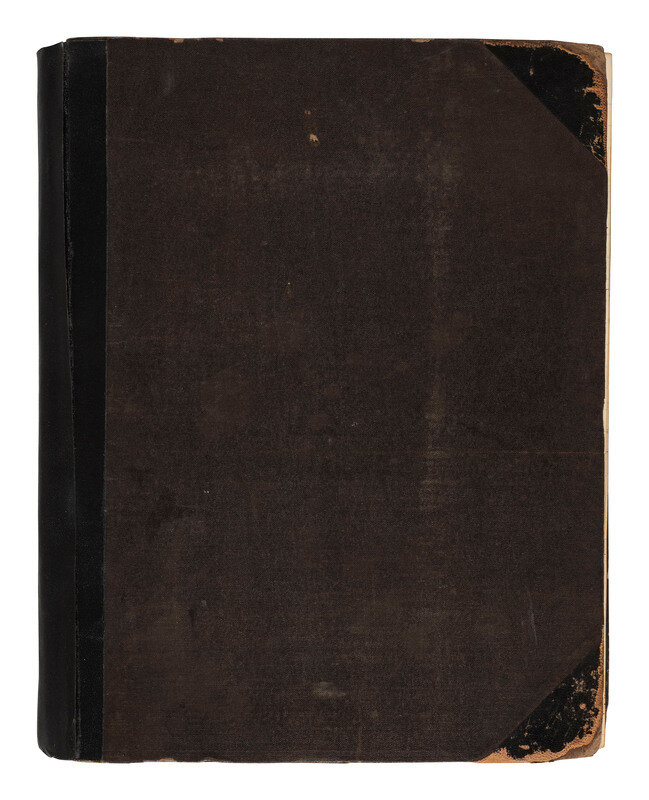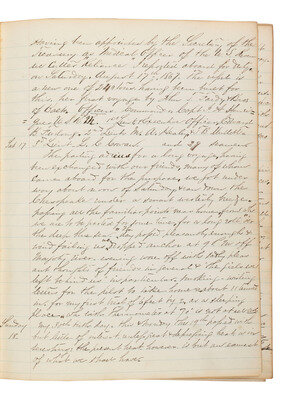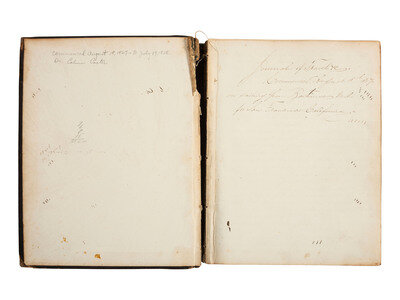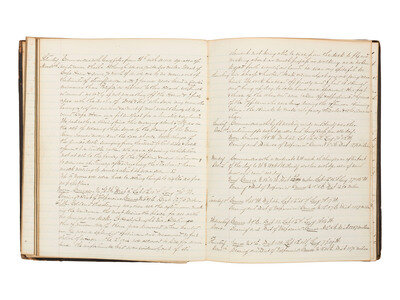Condition Report
Contact Information
Auction Specialist
Lot 458
[U.S. COAST GUARD] -- [AFRICAN AMERICANA]. Ship journal of Dr. Calvin Carter, Medical Officer on board the U.S. Revenue Cutter Reliance, 1867-1868.
Sale 2057 - American Historical Ephemera and Photography
Oct 25, 2024
10:00AM ET
Live / Cincinnati
Own a similar item?
Estimate
$500 -
700
Price Realized
$699
Sold prices are inclusive of Buyer’s Premium
Lot Description
[U.S. COAST GUARD] -- [AFRICAN AMERICANA]. Ship journal of Dr. Calvin Carter, Medical Officer on board the U.S. Revenue Cutter Reliance, 1867-1868.
"Journal of Travel &c. / Commenced August 18th 1867. / on sailing from Baltimore Md / for San Francisco." 17 August 1867 - 19 July 1868. 91pp, 9 x 11 1/4 in., leather-covered paper boards, ink, blue ruled paper. Shipboard journal from a voyage on which one of the commanding officers was 2nd Lt. Michael Augustine Healy (1839-1904), the first man of African American descent to command a ship of the U.S. government and one of the most famous captains in Coast Guard history.
Dr. Calvin Carter (dates unknown) opens the journal reporting, "Having been appointed by the Secretary of the Treasury as Medical Officer of the U.S. Revenue Cutter 'Reliance' I reported aboard for duty on Saturday August 17th, 1867. The vessel is a new one of 24 tons having been built for this her first voyage..." He then lists the officers onboard including third in command, "2nd Lieut. M.A. Healey." Carter's writings over the next year reflect a typical shipboard journal recording location, weather, wind, direction, distance traveled, landmarks, wildlife, ports of call, ships encountered, etc. scattered with references to his own shipboard activities and that of his fellow shipmates as well as notable occurrences.
Carter indicates on August 23rd that there is little to do on board for him as "no body sick - as sailors unlike soldiers keep as far from the Dr as they can until they are completely helpless." The following day, however, Carter acquires an additional duty: "I have something more now to do, as I undertook to keep Mr. Healy's Log Book for him. It is no trouble for me & helps fill up the lazy moments." Carter makes multiple mentions of Healy throughout the journal including one describing Healy's part in the attempted rescue of a "cabin boy" who had been swept overboard: "Saturday [Sept] 21st ... a chair was thrown overboard in the hope it might be of some service to the unfortunate at the same time the Ship was hove to & 2nd Lieutenant Healy & 4 men were quickly lowered away in the Captain's Gig & went after him; they rowed over and around the spot where he was last seen until there was no possible hope left...."
In addition to Healy references, Carter's writing paints a vivid picture of the journey and shipboard experience that exceeds many similar journals. Having reached San Francisco harbor on January 29, 1868, he writes extensively (approx. 8pp) about the harbor and, after disembarking to see the city, records at length his impressions of the city. "San Francisco is far more cosmopolitan than any other American city except New York," he writes. Carter then describes the buildings, landscape, hotels, climate, and more. Later entries are more sporadic, but include description of the continuation of his voyage into the waters of Alaska with stops at Fort Steilacoom in present-day Washington and Fort Wrangell, Alaska.
Born into slavery on a plantation near Macon, Georgia, Healy was the son of white enslaver Michael M. Healy and his enslaved common-law wife, Mary Eliza Smith. Michael M. Healy sent his son Michael A. Healy, and his other children born by Mary Eliza, to the North to be educated. The young Healy first began his seagoing career in 1854 as a cabin boy aboard an American East Indian Clipper and quickly rose through the ranks. He applied for a commission in the U.S. Revenue Cutter Service (precursor to U.S. Coast Guard) and was accepted, his commission as third lieutenant being signed by President Lincoln. He was promoted to second lieutenant on 6 June 1866, and was assigned along with Dr. Carter to the USRC Reliance for its first voyage - a sail to the newly acquired Alaska Territory via Cape Horn and San Francisco. It was commanding ships in Alaska over the following decades that Healy earned his reputation as a legendary commander and his nickname "Hell Roarin' Mike." Healy, who appeared Caucasian, did not admit his racial background and passed as white while in the service. Today, he is the namesake of a USCG icebreaker, and is viewed as a powerful law enforcement officer in a lawless maritime frontier.
This lot is located in Cincinnati.
